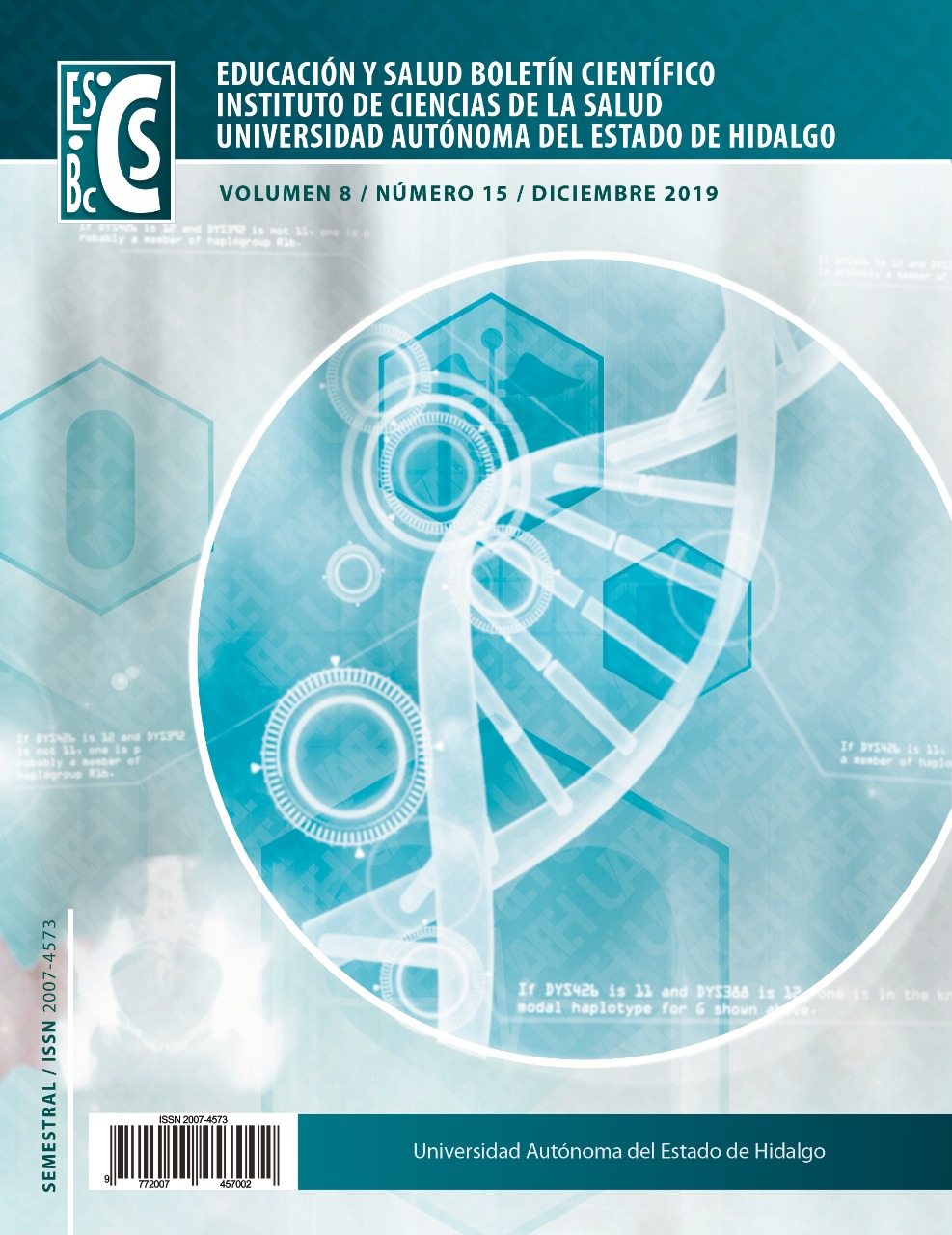The Human Microbiome: Between health and disease
Abstract
The Human Microbiome Project analyzed and characterized at a genomic level the bacterial communities associated with humans. For the first time, the relationships between human beings and microorganisms have been visualized, as well as the variables and microbiological and clinical parameters that will allow better understand the disorders originated by the microbiome.
The cooperative interactions between microbes and hosts involve elementary host functions, such as defense, metabolism and reproduction. The variation of host microbiota is due to the introduction or extinction of particular microbial groups or changes in the structure of their population. For example, some investigations showed that the functional maturation of the intestinal microbiome during the first three years of life is common in three populations of different countries, and include age-associated changes with bacterial genes involved in the biosynthesis and metabolism of vitamins.
The disappearance, eradication, disinfection or any similar term selectively of the microbiota could contribute to many diseases of the digestive system, predispose to obesity and its collateral damage, favor asthma and related disorders, as well as increase the spread of epidemics of high-risk pathogens. Future research should try to clarify and prevent these points, because the theoretical foundations indicate that the ecological changes that involve our ancestral microbiota could have the power to affect biochemistry, immunology, physiology and even psychologically, to our health.
Downloads
References
B.W.B.,R.A.G.,S.K.H.,B.A.M.,K.E.N.,J.F.P.,G.M.W.,O.W.,R.K.W. Structure, function and diversity of the healthy human microbiome. Nature. 2012 June 14; 486: 207-214.
Cho I, Blaser J. The human microbiome: at the interface of health and disease. Nature Reviews. 2012 April; 13: 260-270.
Yatsunenko T, Rey F, Manary M, Trehan I, Domínguez-Bello M, Contreras M, et. Al. Human gut microbiome viewed across age and geography. Nature. 2012 June 14; 486: 222-228.
Qin J, Li R, Raes J, Arumugam M, Burgdorf K, Nielsen T, et. Al. A human gut microbial gene catalogue established by metagenomic sequencing. Nature. 2010 March 4; 464: 59-67.
Chen E, Fischbach M, Belkaid Y. Skin microbiota-host interactions. Nature. 2018 January 25; 553: 427-436.
Tett A, Pasolli E, Farina S, Truong, D, Asnicar F, Moreno Z, Beghini F, et. Al. Unexplored diversity and strain-level structure of the skin microbiome associated with psoriasis. Nature Partner Journals. 2017 June 22; 3 (14): 1-12.
Falush D, Kraft C, Taylor N, Correa P, Fox J, Achtman M, Suerbaum, S. Recombination and mutation during long-term gastric colonization by Helicobacter pylori: Estimates of clock rates, recombination size, and minimal age. PNAS. 2001 December 18; 98 (26): 15056-15061.
Tomb F, White O, Kerlvage A, Clayton R, Ketchum K, Fleischmann R, Klenk H, et. Al. The complete genome sequence of the gastric pathogen Helicobacter pylori. Nature. 1997 August; 388: 539-547.
Linz B, Balloux F, Moodley Y, Manica A, Liu H, Roumgnac P, et. Al. An African origin for the intimate association between humans and Helicobacter pylori. Nature. 2007 February 22; 22: 915-918.
Qin N, Yang F, Li A, Prifti E, Chen Y, Shao J, et. Al. Alterations of the human gut microbiome in liver cirrosis. Nature. 2014 September 4; 513: 59-77.
Serena C, Ceperuelo-Mallafré V, Keiran N, Queipo-Ortuño M, Bernal R, Gomez-Huelgas R. Elevated circulating levels of succinate in human obesity are linked to specific gut microbiota. The ISME Jorunal. 2018 January 12. Disponible en: http://www.nature.com/articles/s41396-018-0068-2 [aprox. 16 págs].
Jie Z, Xia H, Zhong S, Feng Q, Li S, Liang S, et. Al. The gut microbiome in atherosclerotic cardiovascular disease. Nature communications. 2017; 8 (845): 1-12.
Subramanian S, Huq S, Yatsunenko T, Haque R, Alam M, Benezra A, Mahfuz M, et. Al. Persistent gut microbiota immaturity in malnourished Bangladeshi children. Nature. 2014 June 19; 510: 417-421.
Turnbaugh P, Hamady M, Yatsunenko T, Cantarel B, Duncan A, Ley R, et. Al. A core gut microbiome in obese and lean twins. Nature. 2009 January 22; 457: 480-485.
Bäckhed F, Tremaroli V. Functional interactions between the gut microbiota and host metabolism. Nature. 2012 September 12; 489: 242-249.
Bosscher D, Chung W, Duncan S, Flint H, Luois, P, Parkhill J, Walker A. Modulation of the human gut microbiota by dietary fibres occurs at the species level. BioMed Central. 2016; 14 (3): 1-13.
Gordon J, Jansson J, Knight R, Lozupone C, Strombaugh J. Diversity, stability and resilience of the human gut microbiota. Nature. 2012 September 13; 489: 220-230.
Elson C, Hatton R, Maynard C, Weaver C. Reciprocal interactions of the intestinal microbiota and immune system. Nature. 2012 September 13; 489: 231-241.
Shanahan F, O’ Toole P. Host–microbe interactions and spatial variation of cancer in the gut. Nature Reviews. 2014 June 24.
Blaser M, Falkow S. What are the consequences of the disappearing human microbiota? Nature Reviews. 2009 December; 7: 887-894.
Brandwein M, Steinberg D and Meshner S. Microbial biofilms and the human skin microbiome. NPJ Biofilms and Microbiomes. 2016 November 23; 2: 1-6
Drewes JL et al. High-resolution bacterial 16S rRNA gene profile meta-analysis and biofilm status reveal common colorectal cancer consortia. NPJ Biofilms and Microbiomes. 2017 November 29; 3: 34
Shukla SD, Budden KF, Neal R and Hansbro PM. Microbiome effects on immunity, health and disease in the lung. Clinical & Translational Immunology. 2017 February 5. 6, e133.
Vandeputte D, Kathagen G, et al. Quantitative microbiome profiling links gut community variation to microbial load. Nature. 2017 November 23; 551: 507-511.
Proctor L. What´s next for the human microbiome?. Nature. 2019 May 30; 569: 623-625.












